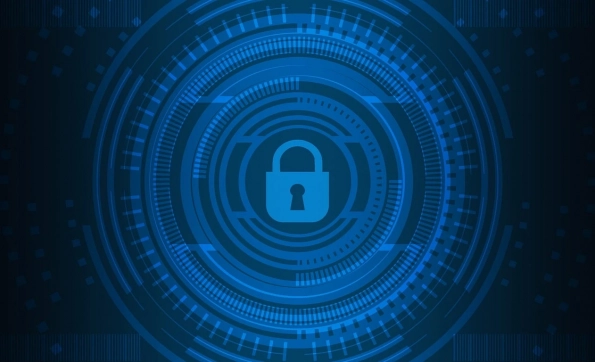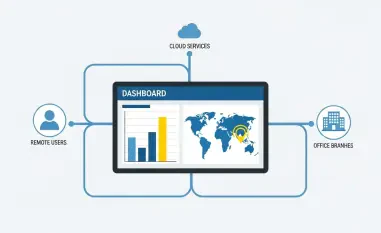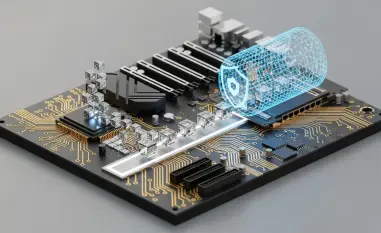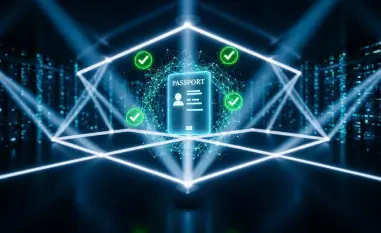In the ever-evolving landscape of cybersecurity, organizations are constantly grappling with sophisticated and frequent cyber threats. Traditional detection and response methods, once the cornerstone of cybersecurity, are proving increasingly inadequate. With cyber threats growing in complexity, there is a pressing need for a shift towards more proactive and preemptive security strategies. This elusive battlefront presents a significant challenge for current industry-standard technologies and defensive measures, urging a rethinking of how cybersecurity is approached.
As cyber threats advance, traditional cybersecurity measures such as firewalls and antivirus systems become less effective. Cybercriminals continuously develop new tactics to evade detection, causing traditional defenses to become obsolete. The static nature of these measures often fails to keep up with the dynamic threat landscape, making organizations that rely solely on these traditional methods vulnerable to breaches. This has led to an increasing consensus among experts on the necessity of a dynamic and adaptive cybersecurity approach to adequately defend against such sophisticated threats.
The Ineffectiveness of Traditional Cybersecurity Measures
Traditional cybersecurity measures, such as firewalls and antivirus systems, have long been the first line of defense for organizations. However, these measures are becoming less effective against advanced attack techniques as cybercriminals continuously develop new tactics to evade detection, rendering traditional defenses obsolete. The static nature of these measures means they often fall short in keeping up with the dynamic threat landscape, leaving organizations vulnerable.
Organizations relying solely on these traditional methods find themselves at a significant disadvantage. Advanced threat actors breach these defenses with relative ease, leading to substantial data breaches and financial losses. The increasing frequency and sophistication of these attacks highlight the critical need for more dynamic and adaptive cybersecurity approaches. Traditional defensive barriers are frequently breached, necessitating a shift towards more robust and proactive defense mechanisms.
The Need for New Approaches
As cyber threats evolve, there is a growing consensus among cybersecurity experts about the necessity of shifting from reactive to proactive measures. Proactive cybersecurity involves anticipating and neutralizing threats before they materialize, rather than responding to them after the fact. This approach is essential in staying ahead of sophisticated threats that can bypass traditional detection techniques. Investing in advanced threat intelligence, predictive analytics, and automated response systems is key for organizations looking to adopt this new paradigm.
Adopting new technologies and methodologies plays a vital role in this shift. Advanced threat intelligence enables organizations to gather insights into potential attacks, while predictive analytics helps foresee emerging threats. Automated response systems allow for a rapid mitigation of threats before they can cause harm. By investing in these tools, organizations can take a more proactive stance, identifying and neutralizing risks preemptively. This more dynamic and adaptive approach significantly enhances an organization’s ability to defend against evolving cyber threats, providing a stronger, more resilient cybersecurity posture.
The Impact of Generative AI
Generative artificial intelligence (AI) represents a significant game-changer in the current threat landscape, as it can enhance defensive measures while simultaneously augmenting the capabilities of attackers. Generative AI enables cybercriminals to craft highly personalized and sophisticated attacks at scale, including social engineering and phishing schemes. This increased risk profile necessitates the adoption of preemptive cybersecurity measures, as the sophistication of AI-driven threats demands defenses that go beyond traditional detection and response methods.
Organizations must leverage AI to enhance their threat detection capabilities, employing machine learning algorithms to identify patterns and anomalies indicative of potential attacks. By doing so, they can stay one step ahead of cybercriminals using AI to their advantage. Additionally, AI-driven cybersecurity solutions can continuously learn and adapt to emerging threats, providing a more robust defense. Staying ahead in this technological arms race requires leveraging AI not only to detect but to predict and prevent potential threats, thereby ensuring a stronger security posture against these advanced tactics.
The Evolution of Managed Detection and Response (MDR)
Managed Detection and Response (MDR) services have traditionally focused on reactive measures, identifying, and responding to threats after they occur. However, MDR is evolving to incorporate proactive strategies that preemptively manage and mitigate cyber risks. This shift is necessary to counteract the methods employed by modern attackers, who often leave no detectable signatures. Proactive MDR involves incorporating continuous monitoring, threat hunting, and automated response mechanisms to identify and neutralize threats before they can inflict damage.
By integrating these elements, MDR services can remain effective in maintaining a robust cybersecurity posture amidst increasingly sophisticated attacks. The evolution of MDR towards a more proactive stance ensures that organizations can identify and address potential threats in their early stages, preventing them from escalating. This forward-thinking approach enhances the overall resilience of an organization’s cybersecurity framework, making it better equipped to handle the sophisticated tactics employed by today’s cybercriminals.
The Role of Preemptive Cyber Defense
Preemptive cyber defense revolves around preventing attacks rather than reacting to them post-incident. This method involves anticipating potential threats and taking measures to neutralize them before they can cause harm. It emphasizes continuous monitoring, threat intelligence, and automated response systems as critical components in safeguarding against advanced threats that traditional methods might miss.
By adopting a preemptive stance, organizations can significantly reduce their risk profiles. This approach enables the identification and mitigation of threats in their early stages, preventing them from escalating into full-blown attacks. Continuous monitoring ensures that potential threats are detected in real time, while threat intelligence provides insights into emerging risks. Automated response systems allow for swift neutralization of detected threats, ensuring minimal impact on the organization. This comprehensive approach to preemptive defense is essential in building a robust cybersecurity framework capable of withstanding today’s sophisticated threats.
The Importance of High-Resolution Threat Intelligence
Given the rapid pace of threat landscape evolution, enhanced threat intelligence capabilities are crucial. High-resolution threat intelligence, or Predictive Threat Intelligence (PTI), plays a key role in anticipating future attacks and applying preemptive mitigation measures. PTI leverages advanced analytics and machine learning to predict potential threats based on historical data and emerging trends, providing organizations with invaluable insights to stay ahead of attackers.
By utilizing PTI, organizations can proactively address vulnerabilities and implement measures to mitigate risks before they are exploited. This proactive approach enables the identification of potential attack vectors and the development of strategies to counteract them. High-resolution threat intelligence is a vital component of a comprehensive preemptive cybersecurity strategy, allowing organizations to remain agile and resilient while navigating the ever-changing threat landscape.
The Adoption of Automated Moving Target Defense (AMTD)
Automated Moving Target Defense (AMTD) is recognized as a next-generation cybersecurity strategy that significantly enhances security by continuously altering the attack surface. AMTD disrupts the attack planning process for adversaries by introducing unpredictability into the environment, making it more difficult for attackers to exploit vulnerabilities. This strategy involves the use of automated systems to change network configurations, IP addresses, and other elements of the attack surface regularly.
With these dynamic and constantly shifting elements, AMTD creates an environment that is challenging for attackers to navigate. This approach heightens the difficulty for cybercriminals to maintain a foothold in the targeted system, significantly boosting an organization’s defense posture. The adoption of AMTD demonstrates a substantial leap forward in cybersecurity, offering a robust and innovative solution to counteract the advanced tactics employed by modern cybercriminals. By continuously altering the attack surface, organizations can create a more resilient and adaptive defense mechanism, reducing the likelihood of successful breaches.
Integrating Advanced Technologies for Enhanced Defense
To achieve a comprehensive cybersecurity stance, it is essential not only to implement reactive detection and response measures but also to incorporate proactive prevention mechanisms. The consolidation of security layers ensures a holistic approach to threat mitigation. Integrating advanced technologies like AMTD within existing security frameworks significantly elevates an organization’s defense posture. These technologies introduce constant changes and unpredictability into the system, disrupting the typical attack lifecycle.
By doing so, organizations can prevent attackers from maintaining a foothold in the targeted environment. This dynamic defense mechanism is crucial in safeguarding against sophisticated cyber threats by preventing them from exploiting system vulnerabilities. The integration of advanced technologies allows organizations to anticipate, adapt, and respond efficiently to evolving threats, ensuring a fortified defense posture. This synthesis of traditional and advanced measures enables a comprehensive and robust cybersecurity strategy, capable of withstanding the complexities of today’s threat landscape.
Main Findings and Conclusions
In today’s rapidly changing cybersecurity landscape, organizations face increasingly sophisticated and frequent cyber threats. Traditional detection and response methods, once the mainstay of cybersecurity, are becoming less effective. As cyber threats grow more complex, there’s an urgent need to shift toward more proactive and preemptive security strategies. This elusive battlefront poses a significant challenge for current industry-standard technologies and defensive measures, necessitating a rethink in cybersecurity approaches.
As cybercriminals continuously develop new tactics to evade detection, traditional cybersecurity defenses such as firewalls and antivirus systems are proving increasingly inadequate. The static nature of these measures often fails to keep up with the constantly evolving threat landscape, leaving organizations that rely solely on them vulnerable to breaches. This growing challenge has led to a widespread agreement among experts on the need for a dynamic and adaptive cybersecurity strategy. Such an approach is essential to effectively defend against sophisticated and ever-changing cyber threats that organizations face today.













